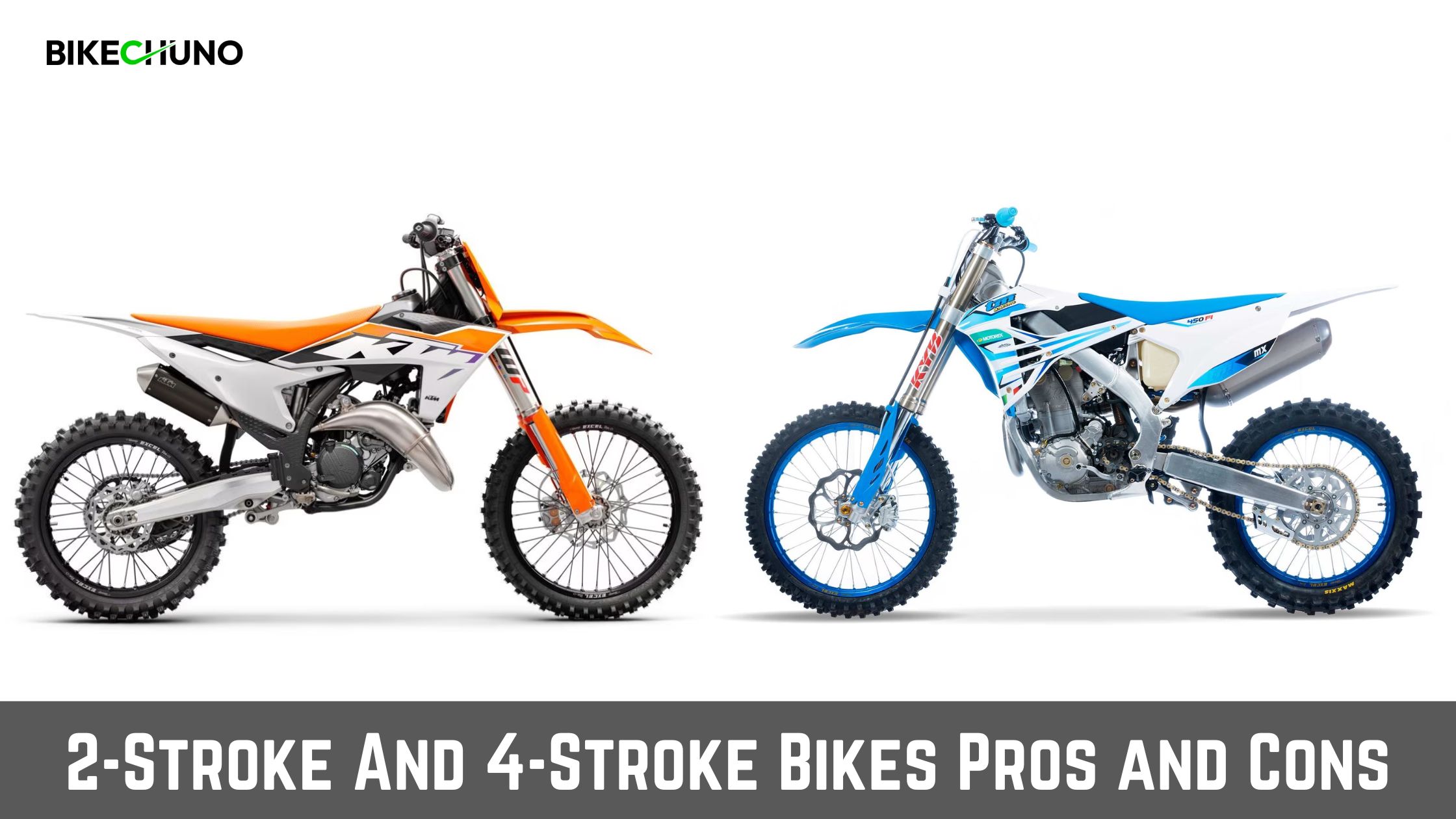
Motorcycle performance is greatly influenced by engine design. Engine mechanisms have evolved. However, the different engine design types remain the same: 2- and 4-stroke engines. If you own a bike, you’ve probably heard these phrases. What exactly does it mean, how do the two differ, and which is preferable?
Learn more about motorcycle 2-Stroke And 4-Stroke engines now.
Know More About The Stroke Engine
The piston’s movement during a stroke of an engine’s combustion process. A combustion cycle is the procedure of air-fuel mixture intake, compression, combustion, and exhaust of burned gases. The piston rises and falls in the cylinder.
- INTAKE – The piston absorbs fuel as it descends from the cylinder, allowing it to enter the combustion chamber.
- COMPRESSION – As the piston ascends again, the intake valve closes, compressing the air-fuel combination inside.
- COMBUSTION – The air-fuel mixture is ignited by the spark plug spark, leading to combustion.
- EXHAUST – Burning gases are released by an open exhaust valve when combustion gases force a piston down a cylinder.
Differences Between A 2-Stroke And A 4-Stroke Engine
If you look closely, you won’t see any differences between the two types of motorcycle engines regarding how they function or appear. The number of strokes needed to produce power differs between 2-stroke and 4-stroke engines.
- The combustion cycle in a 2-stroke engine is finished in two piston strokes or one full crankshaft rotation. Intake and compression are combined in one action, and combustion and exhaust are combined in the second. Combustion in a 4-stroke engine finishes in 4 strokes. Intake, compression, combustion, and exhaust are all carried out in 4 different strokes. Each stroke generates power generation because it completes one phase at a time.
- Oil and gasoline are combined in 2-stroke engines to lubricate the engine. Oil and gasoline do not mix in 4-stroke engines.
- The piston swings up and down like a vertically sliding door to open and closes the ports. This replaces the cylinder’s lack of valves with covered and uncovered ports. A broad exhaust pipe, which doubles as an expansion chamber to create a vacuum that draws fuel mixture through the transfer port, makes it simple to identify a 2-stroke engine. Additionally, compression occurs above the piston as the fuel mixture is pulled. 4-stroke engines have intake and exhaust valves.
Pros And Cons Of 2-Stroke & 4-Stroke Bikes
- FUEL EFFICIENCY – A 4-stroke engine uses fuel just once per four strokes, making it more fuel-efficient than a 2-stroke engine.
- EMISSIONS – Since 4-stroke engines don’t need any oil mixed with the fuel, they are clean engines that emit fewer emissions. A 2-stroke engine, however, also releases burned oil into the atmosphere along with exhaust gases.
- MAINTENANCE – Due to their simple design, 2-stroke engines are simpler and cheaper to maintain. Due to their intricate architecture and numerous parts, 4-stroke engines require expensive maintenance.
- PRICE – A 2-stroke engine is cheaper than a 4-stroke engine, which is more expensive.
- NOISE – Compared to 4-stroke engines, 2-stroke engines are noisier and produce a high-pitched sound. 4-stroke engines improve sound insulation, and engines also vibrate less frequently.
- ROBUSTNESS – 4-stroke engines can take more wear and tear and are robust.
- WEIGHT – Due to their intricate design and numerous parts, 4-stroke engines are heavier.
- THERMAL EFFICIENCY – Because a 4-stroke engine runs more efficiently because it is water-cooled rather than a 2-stroke engine, it is more thermally efficient. When used, a 2-stroke air-cooled engine becomes warm.
- OUTPUT – A 4-stroke engine produces more power. Two-stroke engines produce more torque.
- MECHANICAL EFFICIENCY – Because a 4-stroke engine has more parts and more friction, it is less mechanically efficient.
- SIZE – Compared to a 2-stroke engine, a 4-stroke engine takes up more space.
Which Engine Performs Best?
Given that each engine has advantages and disadvantages, it is challenging to determine which is superior. 2-stroke motors in bikes have decreased significantly due to emission laws. There aren’t many 2-stroke versions. Fuel-efficient, clean 4-stroke motorcycles are preferred for daily commuting. A 2-stroke bike is still ideal for high-performance off-road biking. A 2-stroke bike is ideal for off-road biking, racing, and track riding.
CONCLUSION
You’ll choose more wisely if you understand how 2-stroke and 4-stroke bikes operate and differ. Because both types of engines have different functions, whatever best suits your needs will be the best option for you. Always remember to protect your hair and skin while riding motorcycle.



